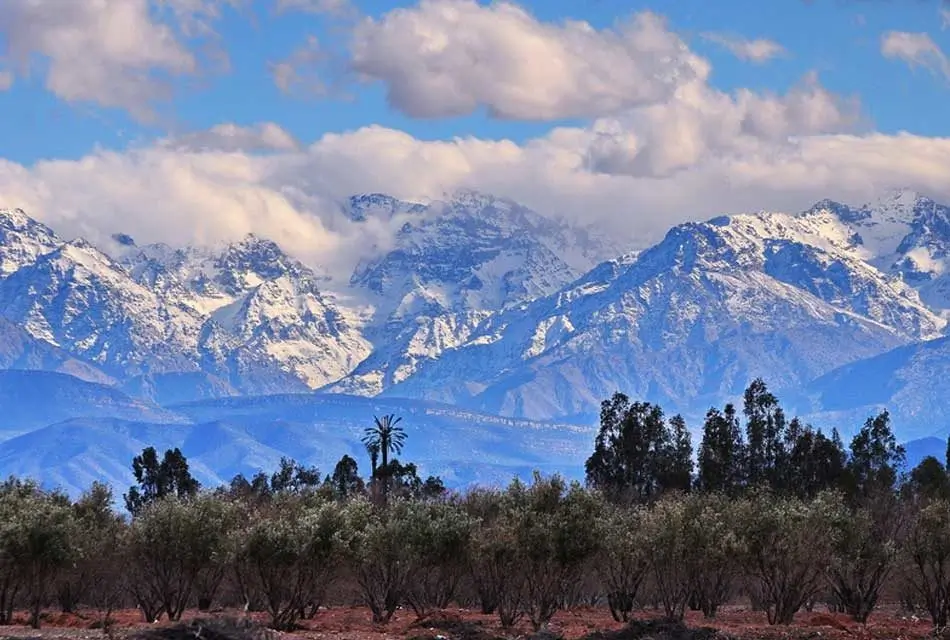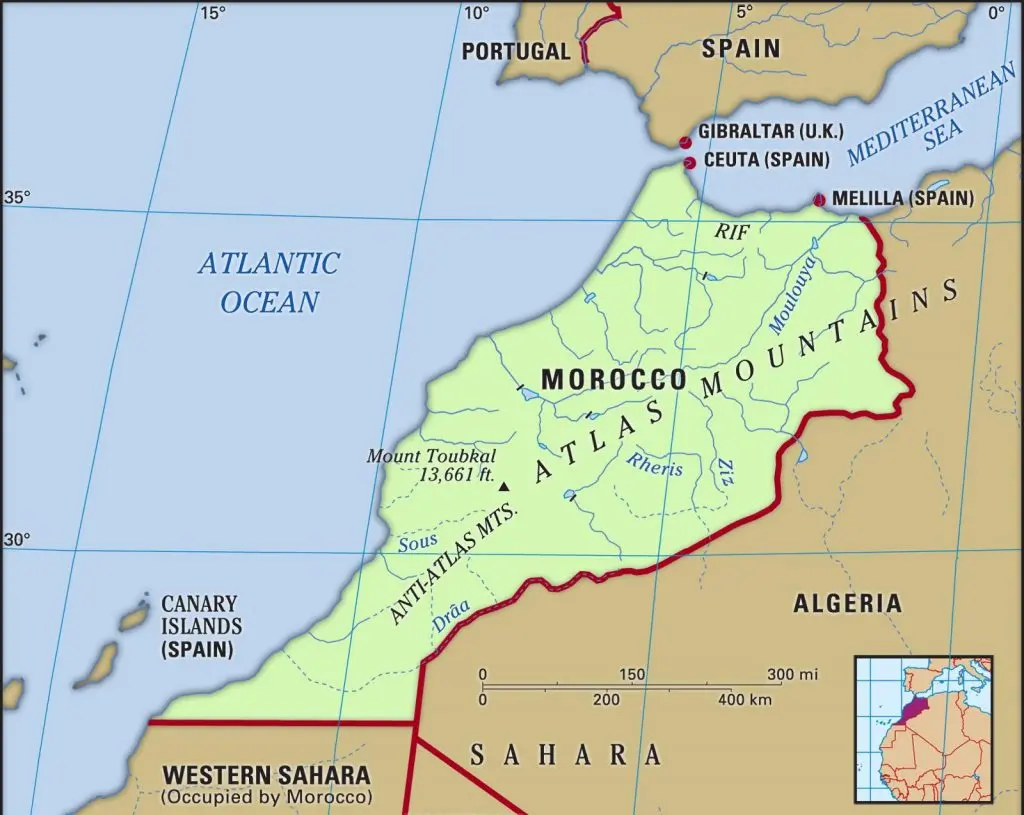Physical Features of Morocco
Morocco, the cold country with hot sun, is located in the northwestern corner of Africa, bordered by the North Atlantic Ocean and the Mediterranean Sea. Morocco can be seen from the coast of Spain, directly across the Straits of Gibraltar.
Considering Morocco’s physical features, it occupies 446,300 square kilometers, excluding 250 square kilometers of coastal waters. Morocco is slightly larger than California.
Morocco contains a versatile environment, and rainfall is unforeseeable as the area contains a mountain range and the Sahara Desert. Let’s see the physical features, geography, and climate changes in detail.
Physical Features of Morocco
Morocco is a cold country with a hot sun; it seems confusing, but let’s have a look. Morocco contains an extensive mountain range that makes it colder, while the Sahara Desert maintains the weather with its hotness.
All Moroccan cities are built upon the traditional medina, a maze of narrow streets and shops recalling old centuries, and the tree-lined boulevards of residential districts reflect the French urban planning ideas of the early twentieth century.
Mountain Ranges
Mountain ranges separate the mild, semitropical northern and western coastal areas from the desert areas. The mountain ranges protect natives from the hot winds of the Sahara Desert as most of the pollution lives west of the mountain ranges.
In the southern regions, the population is scanty and condensed along the Draa and Souss Rivers. The High Atlas, the Middle Atlas, and the Anti-Atlas Mountains range from the northeast to the southwest.
Agriculture Land
A vast plain, the Gharb, lies between Morocco’s western coast and the mountains. It’s the center for all country’s agricultural products. Morocco has a minor trend toward the production of agriculture.
Moreover, about half the pollution of labor is employed in agriculture, but still, the sector produces only 16% of GDP. This is the main reason for poverty in the country. The agricultural land of Morocco is about 67.37% of the total land.
Morocco Geography and Climate
Morocco has been divided into two climatic zones, one that receives western wind from the Atlantic and the other that is controlled by the contact of the Sahara Desert. These climatic changes make Morocco’s weather unpredictable.
The High Atlas is ice-capped and collects moisture from the Atlantic Ocean because the Atlantic and the mountains border this region. The western part of Morocco enjoys a moderate climate due to the cold wind from the Atlantic Ocean.
The eastern part of the High Atlas has a severe pre-Saharan climate. The Rif Mountains sharply perk up along the Mediterranean coast. This mild climate allows the agriculture typical of the Mediterranean region.
Morocco Natural Features
Morocco is a country that has significant variation in its natural resources. Mountain ranges, sandy beaches of the Mediterranean Sea and the Atlantic Ocean, and endless expanses of golden dunes.
The prominent natural landmark of Morocco is the magnificent Sahara Desert situated south of the Atlas Mountains. The exquisite gardens of Menara, established in the 12th century upon the orders of Sultan Abdul Momin, are located in Marrakech.
Let’s have a look at the highly recommended natural attractions in Morocco.
Dades Gorges
Dades Gorges is a stunning river cut with various sets of attractions to see. The river has cut out a landscape of cliffs and rock formations. Many small towns have now developed along the gorge, increasing its beauty.
Cascades d’Ouzoud
Want to see a different side of the country’s natural heritage? Visit Cascades d’Ouzoud, a cascade in the middle of green valets and orchards. Bring your camera to capture this beautiful scenery.
Ourika Valley
At 30km from Marrakesh, Ourika valley is a beautiful place lush with greenery. The red rocks give the river a reddish touch which increases its beauty. Although the guides provide their services, the hike is easy to do on your own.
Moroccan Sahara
Moroccan Sahara known as the southern province, is a south piece of the hottest Sahara Desert of Morocco. At night the stars gazing is just unreal due to the clarity in the air. By day the views of expanses of sands into the Atlas Mountains are only interrupted by the occasional oasis.
Final Thoughts
This article covered almost all the physical features of Morocco that are highly recommended. Morocco is a very versatile country concerning climate and geography.
Due to Diversity in landscapes and cultures, Morocco is a popular tourist destination, offering many quintessential North African vistas, sounds, and tastes. The medinas of the cities maintained their look over the centuries.
To see best tour packages of Morocco you can visit our website. We provide affordable packages and complete details about the destinations, so you feel at home at every destination.




